Home>Articles>How To Get Gasoline Out Of Clothes In The Washer
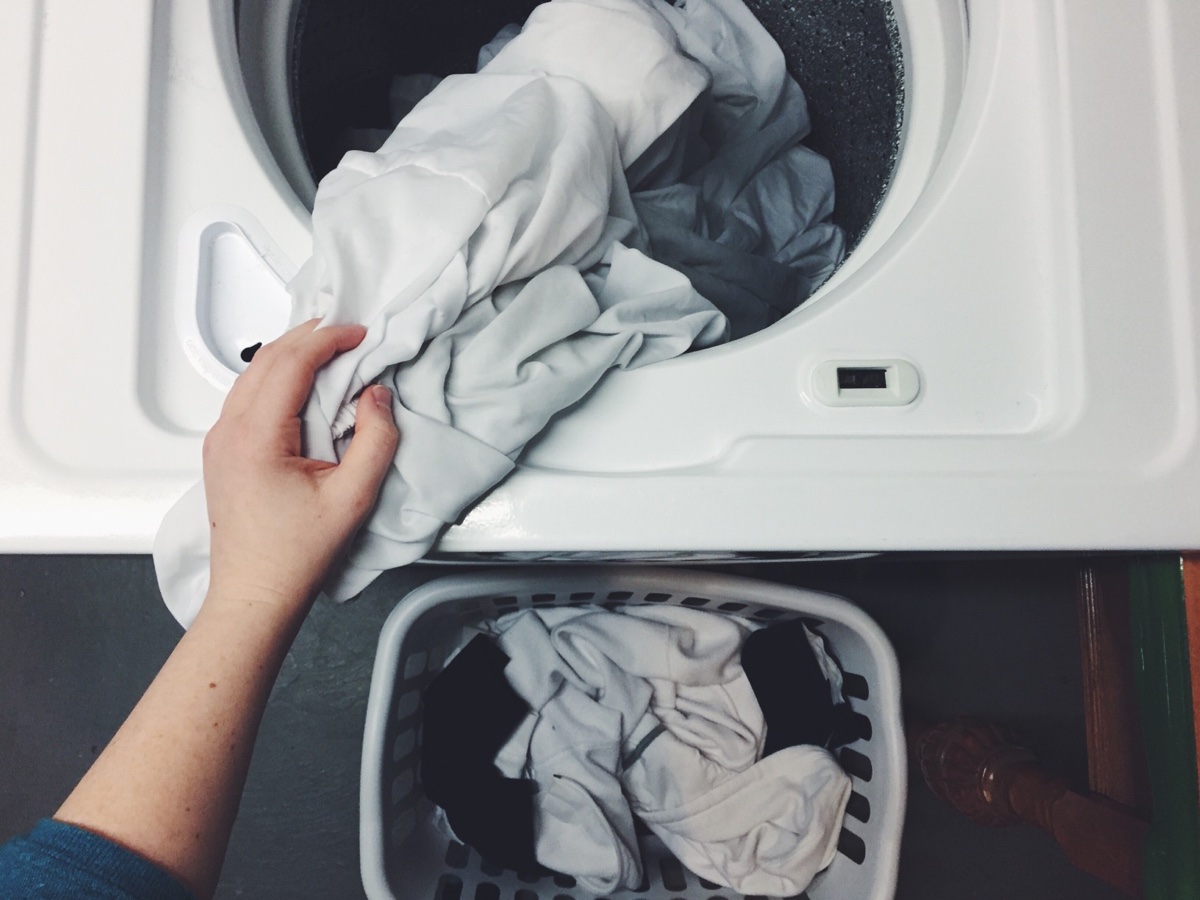

Articles
How To Get Gasoline Out Of Clothes In The Washer
Modified: December 6, 2023
Learn effective tips and tricks to remove gasoline stains from clothes in the washer. Find helpful articles on how to get rid of stubborn gas stains easily.
(Many of the links in this article redirect to a specific reviewed product. Your purchase of these products through affiliate links helps to generate commission for Storables.com, at no extra cost. Learn more)
How To Get Gasoline Out Of Clothes In The Washer
Gasoline stains on clothes can be a frustrating and stubborn problem to deal with. Whether it’s a result of a mishap at the gas station or an accident while refueling, getting gasoline out of clothes requires special care and attention. In this article, we will guide you through the process of safely and effectively removing gasoline stains from clothes using a washer.
Read more: How To Get Ink Out Of Clothes
Safety Precautions
Before we dive into the steps for removing gasoline from clothes in the washer, it’s crucial to prioritize safety. Gasoline is highly flammable and poses potential risks. To ensure your safety:
1. Handle gasoline-soaked clothing with gloves to minimize direct contact.
2. Perform the stain removal process in a well-ventilated area, away from open flames or heat sources.
3. Discontinue the use of any equipment or appliances that generate sparks during the process.
Pre-Treatment Steps
Before placing the gasoline-soaked clothing in the washer, there are a few pre-treatment steps to take:
1. Remove any excess gasoline from the clothing by blotting it with absorbent materials like paper towels or rags. Do not rub the stain, as it may spread further.
2. If the garment is heavily saturated with gasoline, consider placing it in a well-ventilated area to air out for a few hours before proceeding.
Removing Excess Gasoline
To eliminate the remaining gasoline residue from the fabric, follow these steps:
1. Place the garment on a clean, flat surface and cover the stain with a layer of baking soda or cornstarch. These substances help absorb the gasoline.
2. Gently rub the baking soda or cornstarch into the stain using a soft brush or your fingers. Allow it to sit for 15-30 minutes to allow the absorbent material to work its magic.
3. Once the time has passed, shake off the excess baking soda or cornstarch and brush off any residue.
Choosing the Right Laundry Detergent
To ensure the complete removal of gasoline stains during the wash cycle, it’s essential to select a suitable laundry detergent. Look for a detergent that is specifically formulated to tackle tough stains, such as grease and oil. Opt for one that contains enzymes, as they are effective in breaking down the chemical compounds found in gasoline.
Washing Guidelines and Tips
When washing gasoline-stained clothes, follow these guidelines and tips for the best results:
1. Sort the stained clothing into a separate load to prevent the gasoline odor from transferring to other garments.
2. Set the washer to the highest water temperature recommended for the fabric.
3. Add the recommended amount of detergent for the load size and start the washing cycle.
4. Inspect the clothing after the wash cycle is complete. If the stain remains, avoid drying the garment as heat can further set the stain.
Post-Washing Steps
If the stain persists after washing, don’t fret. There are additional treatment methods you can try:
1. Treat the stain with a stain remover or a paste made from equal parts baking soda and water. Gently rub it into the fabric with a soft brush or cloth and let it sit for a few minutes before washing again.
2. For stubborn stains, consider repeating the pre-treatment and washing steps until the stain is completely gone.
Safety Reminders
After successfully removing gasoline stains from your clothes, it’s crucial to follow these safety reminders:
1. Dispose of any gasoline-soaked materials properly, adhering to local regulations and guidelines.
2. Thoroughly wash your hands with soap and water after handling gasoline or gasoline-soaked clothing.
By following these procedures, you can effectively remove gasoline stains from clothes using a washer. Remember to prioritize safety throughout the process and exercise caution when dealing with flammable substances.
Key Takeaways:
- Prioritize safety when removing gasoline stains from clothes. Use absorbent materials, choose the right detergent, and follow washing guidelines to ensure effective stain removal and minimize risks.
- Promptly address gasoline stains to preserve clothing quality and personal safety. Take precautionary steps, inspect garments post-wash, and practice proper disposal methods for gasoline-soaked materials.
Introduction
Getting gasoline stains on your clothes can be a common occurrence, but it can also be a frustrating problem to tackle. Whether it’s from an accidental spill while refueling your car or a mishap at the gas station, gasoline stains can leave behind unsightly marks and unpleasant odors. In this article, we will explore the importance of promptly removing gasoline stains from clothes and provide effective methods for doing so using a washer.
Gasoline stains can have a detrimental effect on the appearance and longevity of your clothing. The unique chemical composition of gasoline makes it a challenging stain to remove, as it contains hydrocarbons and additives that can adhere strongly to fabric fibers.
If left untreated, gasoline stains can lead to permanent discoloration and damage to the fabric. The oily and greasy nature of gasoline also attracts dirt and dust, making the stain more noticeable and difficult to remove. Additionally, the pungent odor of gasoline can linger on the garment, even after washing, causing discomfort and embarrassment.
Removing gasoline stains from clothes is not only essential for preserving the garment’s quality and appearance but also for maintaining personal hygiene and preventing potential health hazards. Gasoline is a highly flammable substance, and wearing clothing soaked in gasoline can pose a fire risk. Eliminating the gasoline residue from your clothes ensures both safety and peace of mind.
In addition, timely stain removal reduces the chances of the stain spreading and becoming more challenging to remove. The longer gasoline sits on the fabric, the deeper it can penetrate, making it harder to eliminate. Prompt attention and proper stain removal techniques are crucial for achieving successful results.
Fortunately, with the right techniques and precautions, you can effectively remove gasoline stains from your clothes using a washer. This method provides a convenient and efficient way to treat the stain while ensuring a thorough clean for your garments.
In the following sections, we will guide you through the necessary safety precautions, pre-treatment steps, washing guidelines, and post-treatment methods to remove gasoline stains effectively. By following these steps, you can restore your clothes to their original state, free from gasoline stains and odors. Let’s dive into the process and learn how to get gasoline out of clothes in the washer.
Read more: How To Get Dog Hair Out Of Washer
Safety Precautions
When it comes to dealing with gasoline stains on clothes, prioritizing safety is of utmost importance. Gasoline is a highly flammable substance that poses potential risks if mishandled. Therefore, taking appropriate safety measures is crucial to protect yourself and prevent accidents or injuries. Here are some essential safety precautions to keep in mind when dealing with gasoline-soaked clothing:
1. Handle with care: Always use disposable gloves or wear protective hand gear when handling gasoline-soaked clothing. Direct contact with gasoline can irritate the skin and may cause chemical burns.
2. Work in a well-ventilated area: Perform the stain removal process in a well-ventilated space, preferably outdoors or in a well-ventilated room. Gasoline fumes are hazardous when inhaled and can cause dizziness, nausea, and respiratory issues. Avoid working in enclosed areas or near open flames or heat sources, which can ignite the fumes.
3. Avoid smoking: Refrain from smoking or being near anyone who is smoking while handling gasoline-soaked clothing. The combination of gasoline fumes and an open flame can lead to a dangerous fire or explosion.
4. Use proper disposal methods: Dispose of any gasoline-soaked materials, such as rags or paper towels, in an appropriate and safe manner. Follow local regulations and guidelines for the proper disposal of hazardous substances. Never dispose of gasoline-soaked materials in regular trash cans or pour gasoline down the drain.
5. Wash hands thoroughly: After handling gasoline or gasoline-soaked clothing, wash your hands thoroughly with soap and water. This helps remove any residual gasoline and reduces the risk of inadvertently spreading it to other surfaces.
In addition to these safety precautions, it’s essential to be aware of the potential fire hazards associated with gasoline. Never use electrical equipment or appliances, such as dryers or irons, that generate sparks or heat near gasoline-soaked clothing. Avoid storing gasoline-soaked garments in enclosed spaces or near flammable materials.
By following these safety measures, you can minimize the risks associated with handling gasoline stains and ensure your well-being throughout the stain removal process. Always prioritize safety above all else.
Pre-Treatment Steps
Before proceeding with the process of removing gasoline stains from clothes in the washer, there are a few essential pre-treatment steps to take. These steps ensure that the stain removal process is effective and the clothing is prepared for treatment. Here’s what you need to do:
1. Gather necessary supplies: Before you begin, gather the necessary supplies for stain pre-treatment. You will need absorbent materials, such as paper towels, rags, or clean white cloths, to initially remove excess gasoline from the affected clothing. Additionally, you may need baking soda or cornstarch to help absorb the remaining grease and odor.
2. Prepare the affected clothing for treatment: Start by removing any excess gasoline from the stained area. Place the garment on a flat surface and cover the stain with layers of absorbent material. Press down gently to blot the stain and soak up as much gasoline as possible. Avoid rubbing the stain, as it can spread and cause further damage.
If the garment is heavily saturated with gasoline, it is advisable to allow it to air out in a well-ventilated area before continuing with the stain removal process. This step helps minimize the intensity of the gasoline odor and reduces the risk of fumes when handling the clothing.
By following these pre-treatment steps, you can effectively prepare the affected clothing for further treatment. Removing excess gasoline and allowing the garment to air out not only paves the way for successful stain removal but also helps create a safer environment for handling the clothing.
Removing Excess Gasoline
When dealing with gasoline stains on clothes, it’s crucial to remove as much of the excess gasoline as possible before proceeding with the stain removal process. This step helps minimize the spread of the stain and improves the effectiveness of the subsequent treatments. Here is a step-by-step guide on how to remove excess gasoline from clothes:
1. Act quickly: As soon as you notice a gasoline stain, it’s important to take immediate action. The longer the gasoline sits on the fabric, the more difficult it becomes to remove.
2. Place absorbent materials: Start by placing absorbent materials, such as paper towels, rags, or clean white cloths, underneath the stained area of the garment and on top of it. These materials will help soak up the excess gasoline.
3. Blot the stain: Gently press down on the stain using a clean cloth or paper towel, allowing the absorbent material to absorb the gasoline. Avoid rubbing the stain, as this can spread it further and embed it deeper into the fabric.
4. Rotate the absorbent materials: As the materials become saturated with gasoline, replace them with fresh absorbent materials. Continue blotting the stain until you no longer observe any transfer of gasoline to the absorbent materials.
5. Check for residual odor or dampness: After removing the excess gasoline, check the affected area for any residual odor or dampness. If you notice a lingering odor or the fabric feels damp, repeat the blotting process with fresh absorbent materials until the fabric is no longer saturated.
It’s important to note that removing excess gasoline may not completely eliminate the stain. The gasoline may have already penetrated the fabric, leaving behind a stubborn mark. However, by removing as much of the excess gasoline as possible, you provide a clean slate for subsequent stain removal techniques to be more effective.
Remember to exercise caution while handling gasoline-soaked garments and ensure proper ventilation during this process.
Choosing the Right Laundry Detergent
Selecting the appropriate laundry detergent is crucial when it comes to effectively removing gasoline stains from clothes. Not all detergents are created equal, and finding the right one can make a significant difference in the stain removal process. Here’s why choosing the right laundry detergent is important and what specific features you should look for:
1. Effective stain removal: The primary reason for choosing the right detergent is its effectiveness in removing tough stains like gasoline. Look for a detergent that is specifically formulated to tackle grease, oil, and other stubborn stains. These detergents often contain powerful enzymes and surfactants that can break down the chemical compounds found in gasoline.
2. Enzymatic action: Enzymes, such as protease and amylase, are active ingredients in some laundry detergents. These enzymes work to break down and digest organic stains, making them highly effective in removing gasoline stains. Check the product label to ensure that the detergent you choose contains enzymatic action.
3. Grease-fighting properties: Gasoline stains contain oily and greasy components, so it’s important to choose a detergent with grease-fighting properties. Look for detergents that mention “grease-fighting” or “oil-stain removal” on the label. These detergents typically have specialized ingredients that help to break down and lift oil-based stains like gasoline.
4. Odor elimination: Gasoline stains often come with a strong and unpleasant odor. Opt for a laundry detergent that is specifically designed to eliminate odors. These detergents typically contain fragrance encapsulation technology that helps trap and neutralize odors, leaving your clothes smelling fresh and clean.
5. Color-safe formula: Gasoline stains can affect various types of fabrics and colors. To protect your clothes from color fading or damage, choose a detergent that is labeled as “color-safe”. These detergents are specially formulated to preserve the vibrancy of colors and prevent color bleeding or transfer.
6. Concentration and dosage: Consider the concentration and dosage instructions of the detergent. Concentrated detergents often require less product per load, making them more cost-effective in the long run. Follow the recommended dosage instructions to ensure proper cleaning without wasting excessive detergent.
7. Hypoallergenic options: If you have sensitive skin or allergies, opt for hypoallergenic laundry detergents. These detergents are formulated without harsh chemicals and fragrances, reducing the risk of skin irritation or allergic reactions.
By choosing a laundry detergent that is specially formulated for stain removal and addressing the specific characteristics of gasoline stains, you can maximize your chances of successfully eliminating the stains. Reading labels and considering these specific features will help you select the right detergent for your gasoline stain removal needs.
Read also: 13 Best Gasoline Pressure Washer For 2024
Washing Guidelines and Tips
When it comes to removing gasoline stains from clothes in the washer, following the right washing guidelines and tips can make a significant difference. Here are some recommendations to ensure effective stain removal and achieve the best results:
1. Sort the stained clothing: Separate the gasoline-stained clothing from other garments to avoid transferring the gasoline odor and stain to unaffected clothes. Wash the stained items together in a separate load.
2. Check care labels: Before proceeding with the wash, carefully read the care labels on the affected garments. Follow the instructions provided to ensure you’re using appropriate washing machine settings and water temperatures suitable for the fabric.
3. Set the water temperature: To enhance stain removal, set the washing machine to the highest water temperature allowed for the fabric. Hot water is effective in loosening and breaking down grease and oil-based stains like gasoline. However, be sure not to exceed the recommended temperature for delicate fabrics that can be damaged by hot water.
4. Select an appropriate wash cycle: Choose a wash cycle that is suitable for the fabric type and stain intensity. If your washing machine has a “heavy-duty” or “stain removal” cycle, opt for that setting to ensure a thorough clean. Alternatively, you can select a longer wash cycle to provide extra time for the detergent to work on the gasoline stains.
5. Use an appropriate amount of detergent: Follow the detergent manufacturer’s instructions for dosage based on the load size. Adding too much detergent won’t necessarily lead to better stain removal and may result in residue left on the clothes.
6. Add stain remover: For particularly stubborn gasoline stains, consider using a stain remover specifically designed for grease and oil stains. Apply the stain remover directly to the affected areas prior to starting the wash cycle. Allow the stain remover to soak into the fabric for a few minutes before proceeding with the wash.
7. Avoid overloading the washer: Ensure that the washer is not overloaded with clothes, as this can hinder proper agitation and prevent effective stain removal. Leave enough space for the garments to move and for the detergent to distribute evenly.
8. Inspect the clothing after the wash cycle: Once the wash cycle is complete, carefully inspect the garments for any remaining gasoline stains. If the stains are still visible, avoid drying the clothes as the heat can set the stain. Repeat the pre-treatment steps and wash the garments again to further remove the remaining stain.
Following these washing guidelines and implementing these tips will improve your chances of successfully removing gasoline stains from clothes. Always remember to check the care labels, choose appropriate settings, and remain vigilant throughout the stain removal process.
Post-Washing Steps
After washing your clothes to remove gasoline stains, it’s important to take a few post-washing steps to ensure the stains have been effectively treated. Here are some recommendations for what to do after the wash cycle:
1. Inspect the clothing: Carefully examine the garments after the wash cycle to check if the gasoline stains have been completely removed. Inspect the affected areas under good lighting to ensure there are no residual stains. If there are remaining stains, avoid drying the clothes as heat can set the stain.
2. Repeat treatment for stubborn stains: For stubborn gasoline stains that have not been completely eliminated, there are additional treatment methods you can try. Consider repeating the pre-treatment steps, such as applying a baking soda or cornstarch paste to the stain and letting it sit for a while before washing again. Alternatively, you can try using a specialized stain remover for grease and oil stains.
3. Spot treatment: If you notice any lingering spots or discoloration in specific areas, you can target those spots with spot treatment. Apply a small amount of stain remover or a mixture of detergent and water directly to the affected area. Gently rub the solution onto the stain and let it sit for a few minutes before washing the garment again.
4. Retreat and rewashing: If the gasoline stains persist even after spot treatment, you may need to retreat the entire garment or the specific areas with a stain remover or other suitable treatment. Follow the instructions provided by the stain remover manufacturer and repeat the washing process.
5. Consider professional cleaning: If all attempts to remove the gasoline stains have been unsuccessful, you may want to consider seeking professional dry cleaning services. Professional cleaners have access to specialized solvents and techniques that can effectively tackle stubborn stains.
Remember, it’s important to address any remaining gasoline stains promptly to prevent them from becoming more challenging to remove. Avoid drying the clothing until you’re confident that the stains have been successfully treated and removed.
By following these post-washing steps and being diligent in inspecting and treating any remaining stains, you can increase your chances of successfully removing gasoline stains from your clothes.
Safety Reminders
After successfully removing gasoline stains from your clothes, it’s important to keep safety in mind and take certain cautionary steps. Here are some reminders to ensure your safety and the proper handling of gasoline-soaked materials:
1. Avoid using gasoline-soaked materials: Once you have removed the gasoline stains from your clothes, it’s crucial to avoid using the gasoline-soaked materials in any way. Discard them properly and avoid reusing them for other purposes to prevent any potential fire hazards or contamination.
2. Properly store and dispose of gasoline-soaked materials: When discarding gasoline-soaked materials, it’s essential to follow proper disposal practices. Consult local regulations and guidelines to determine the correct methods for disposing of hazardous materials in your area. Avoid disposing of gasoline-soaked materials in regular trash cans or pouring gasoline down the drain, as this can have harmful environmental consequences.
3. Keep clothing away from open flames or heat sources: Even after removing gasoline stains, it’s important to remember that gasoline is highly flammable. Avoid exposing the treated clothing to open flames, sparks, or heat sources that can ignite the residual gasoline residue. Store the garments in a cool and ventilated area until they are completely dry.
4. Wash hands thoroughly: After handling gasoline-soaked materials or clothing, wash your hands thoroughly with soap and water. This helps remove any residual gasoline and reduces the risk of inadvertently transferring it to other surfaces or objects.
5. Ventilate the area: If you performed the stain removal process indoors, ensure that the area is well-ventilated even after you have finished. Open windows or use fans to dissipate any lingering gasoline fumes, providing a safer environment for you and others.
6. Store gasoline safely: Always store gasoline in approved containers designed for flammable liquids. Keep them tightly sealed and stored in a well-ventilated area, away from heat sources and open flames. Follow all safety guidelines provided by local authorities for the safe storage of gasoline.
By following these safety reminders, you can minimize the risks associated with handling gasoline stains and ensure the proper disposal of gasoline-soaked materials. Safety should always be a priority when dealing with flammable substances like gasoline, even after the stain removal process is complete.
To remove gasoline from clothes in the washer, add a cup of white vinegar to the wash cycle. The vinegar will help break down the gasoline and eliminate the odor. Wash the clothes on the hottest water setting recommended for the fabric.
Conclusion
Effectively removing gasoline stains from clothes requires following proper procedures and safety precautions. Throughout this article, we have discussed the importance of promptly addressing gasoline stains and provided step-by-step instructions for removing them using a washer. Let’s recap the key points and highlight the significance of following proper procedures:
Gasoline stains not only affect the appearance of your clothes but also pose potential risks and hazards. It’s crucial to prioritize safety when dealing with gasoline, taking precautions to prevent accidents and minimize exposure to flammable fumes.
Before treating gasoline stains in the washer, it’s essential to gather the necessary supplies and prepare the affected clothing. Removing excess gasoline by blotting with absorbent materials and allowing the garments to air out helps create a safer environment and improves the chances of successful stain removal.
Choosing the right laundry detergent is of utmost importance. Look for detergents with effective stain removal properties, enzymatic action, and grease-fighting abilities. Opt for color-safe formulas and consider hypoallergenic options if you have sensitive skin.
During the washing process, separate the stained clothing from other garments and use the appropriate water temperature and wash cycle settings. Inspect the clothing after washing, taking extra steps for stubborn stains if needed. If necessary, consider professional dry cleaning for challenging stains.
After removing the gasoline stains, it’s crucial to practice caution and proper disposal methods. Avoid using gasoline-soaked materials, dispose of them appropriately, and keep clothing away from open flames or heat sources. Thoroughly wash your hands, and ensure proper ventilation in the treatment area.
In conclusion, effectively removing gasoline stains from clothes requires attention to detail, safety precautions, and following proper procedures. Promptly addressing gasoline stains not only helps maintain the quality and appearance of your clothes but also ensures personal safety and prevents potential hazards. By taking the necessary steps and utilizing the right techniques, you can successfully eliminate gasoline stains and enjoy fresh, clean garments once again.
Remember, safety should always be a priority when handling flammable substances like gasoline. Take the necessary precautions, read and follow product instructions, and consider seeking professional assistance if needed. With care and adherence to proper procedures, you can conquer gasoline stains and keep your clothes in pristine condition.
Frequently Asked Questions about How To Get Gasoline Out Of Clothes In The Washer
Was this page helpful?
At Storables.com, we guarantee accurate and reliable information. Our content, validated by Expert Board Contributors, is crafted following stringent Editorial Policies. We're committed to providing you with well-researched, expert-backed insights for all your informational needs.


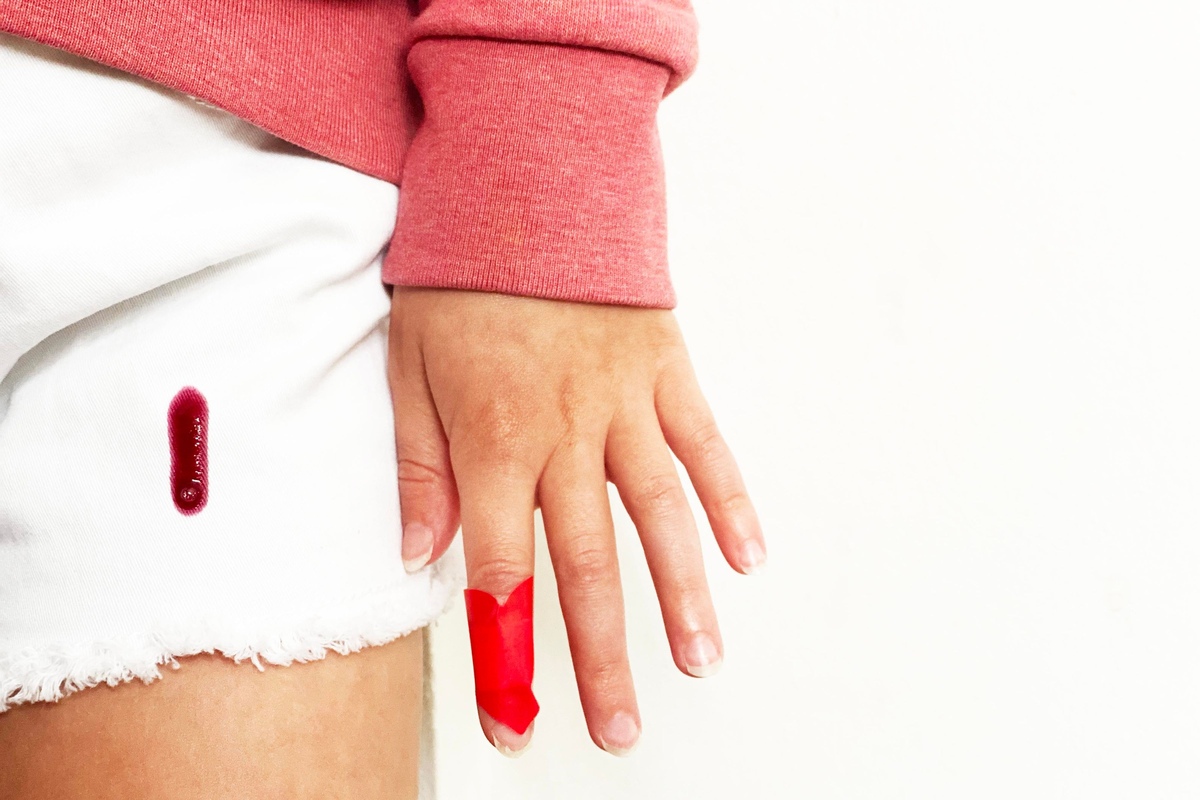
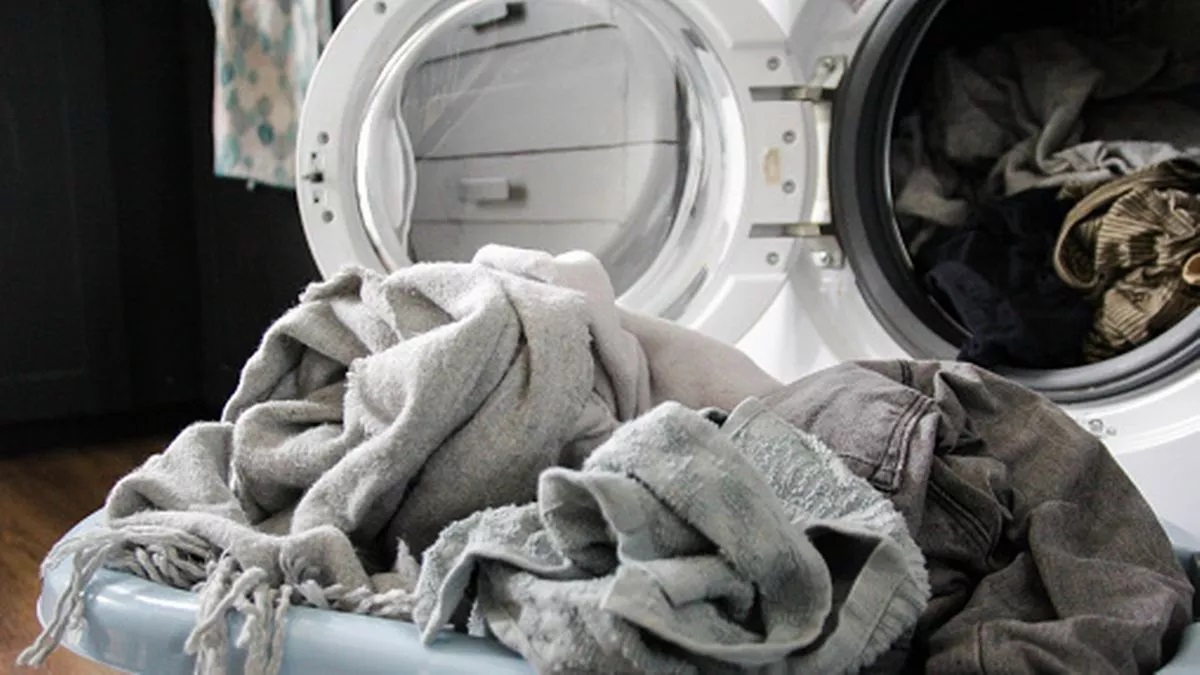

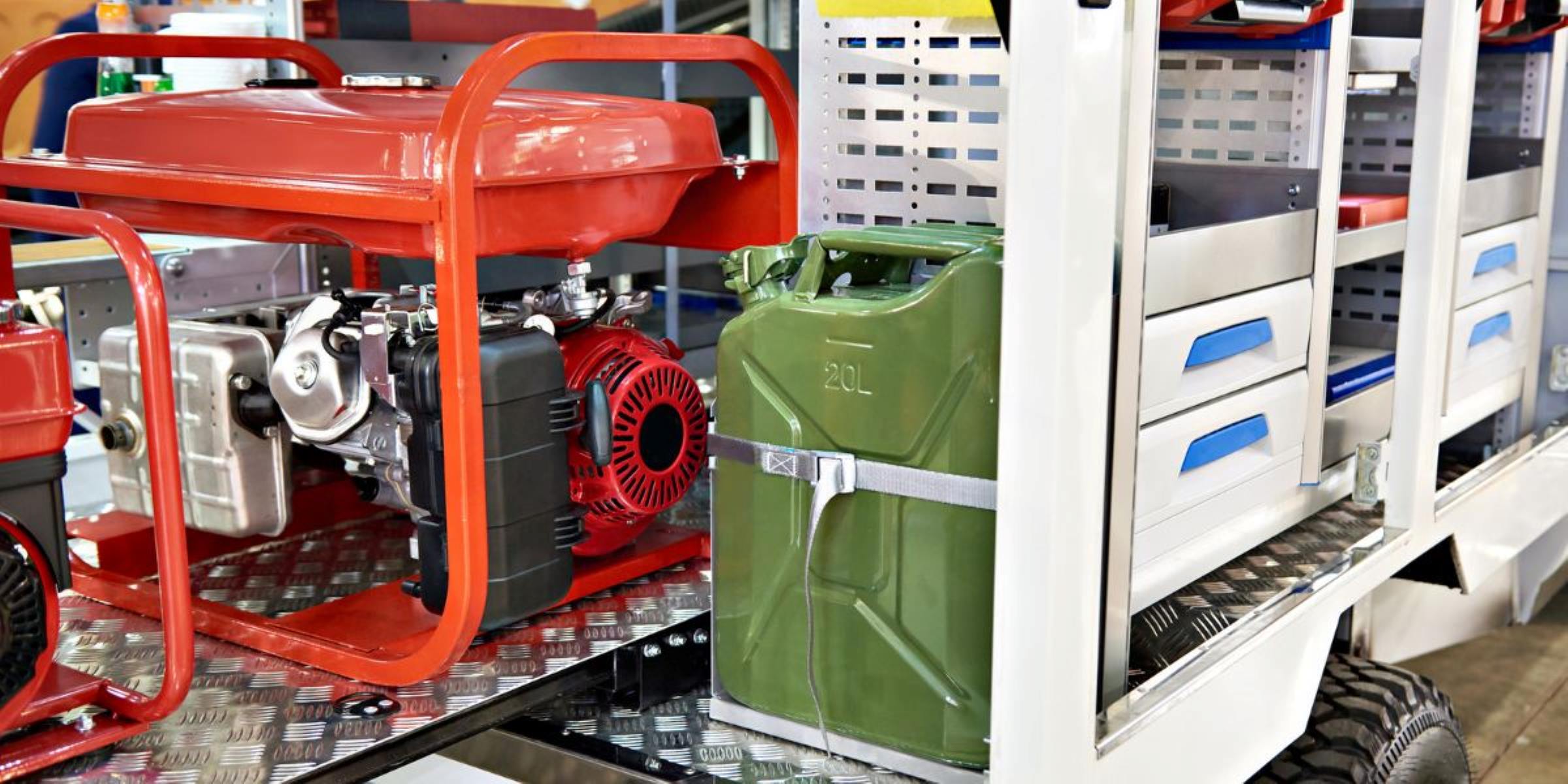


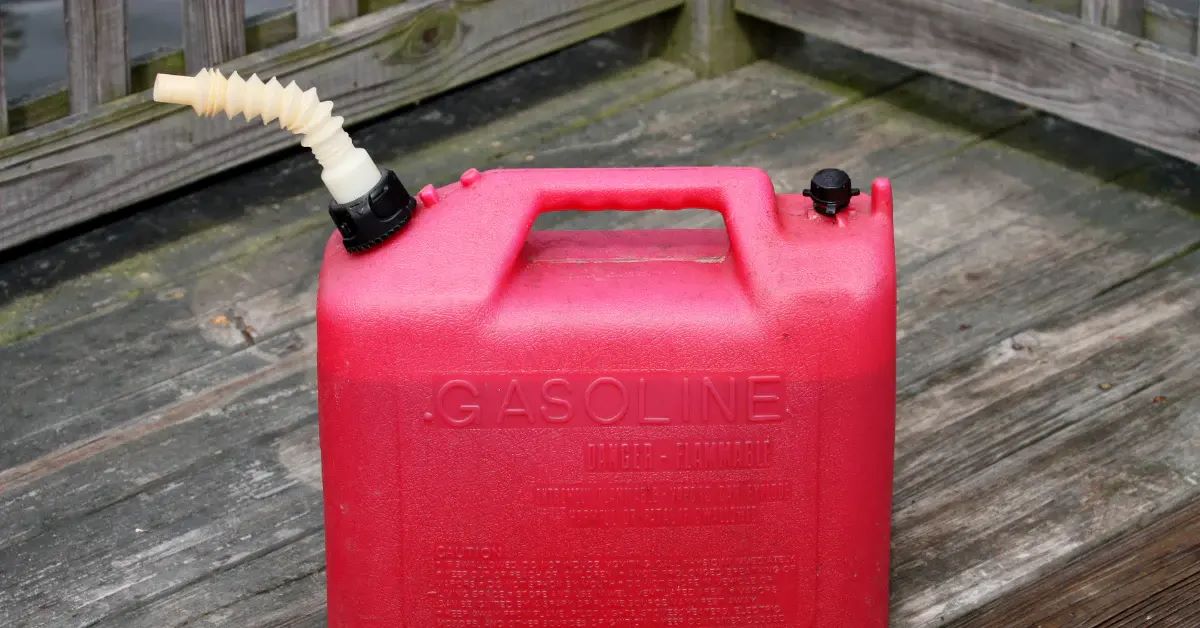
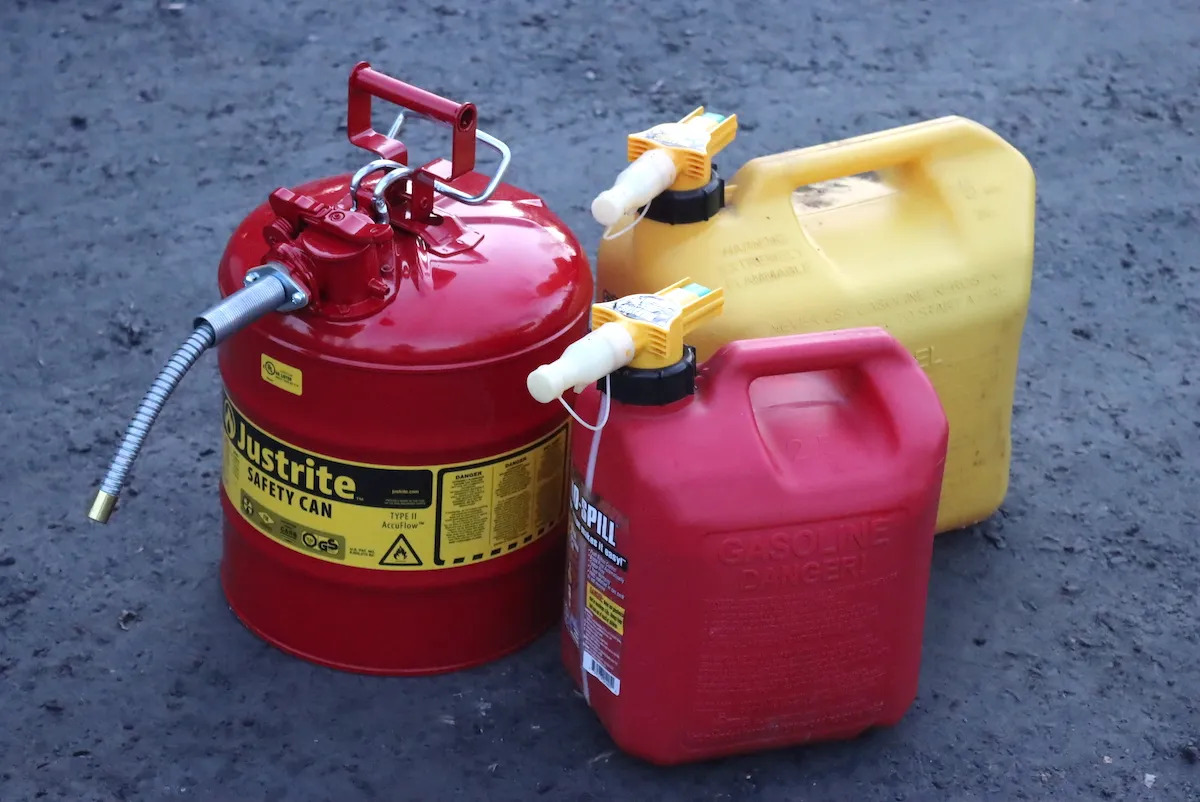
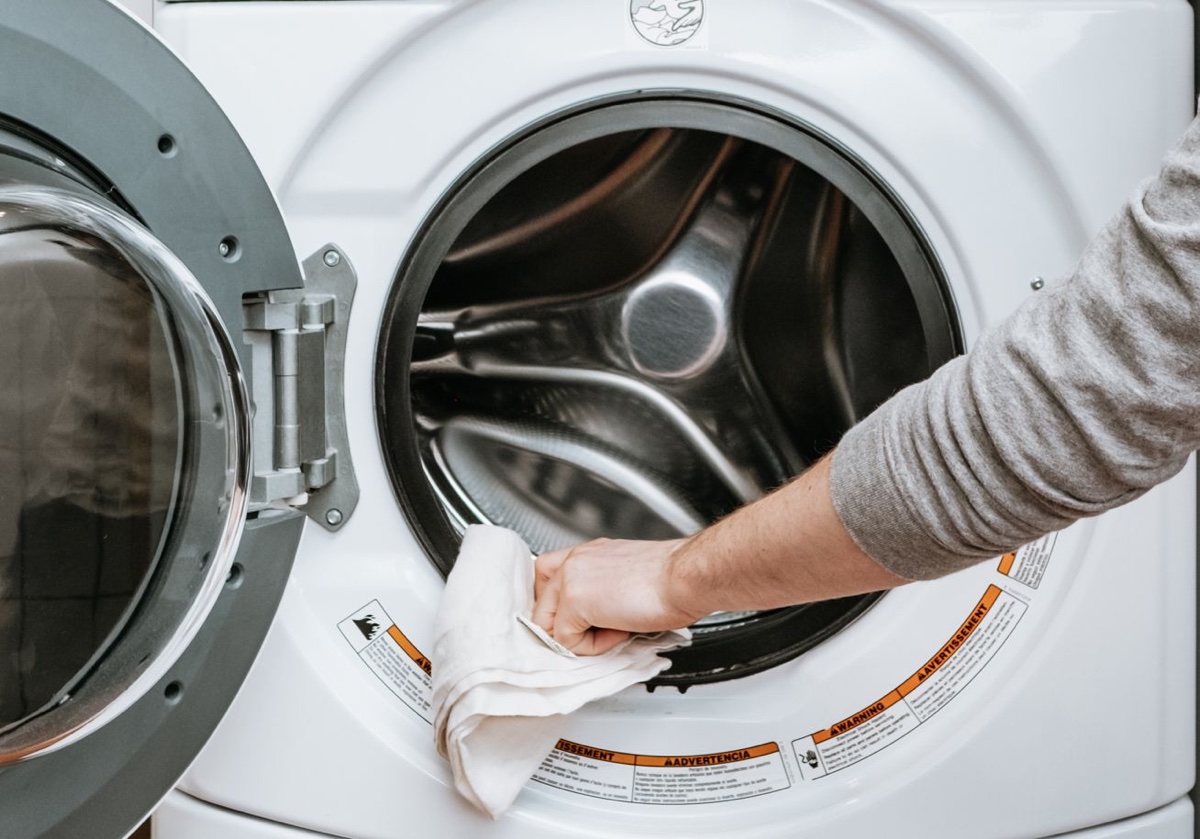
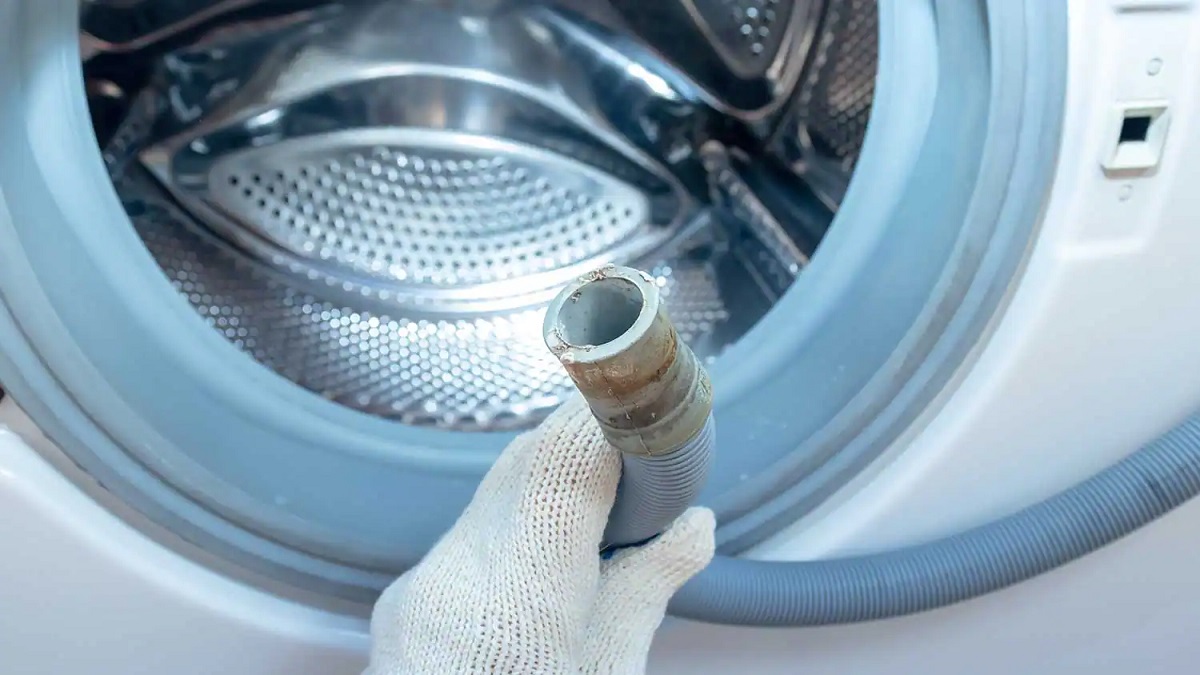

0 thoughts on “How To Get Gasoline Out Of Clothes In The Washer”